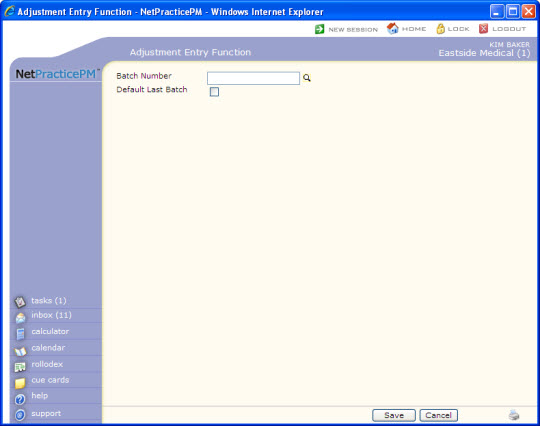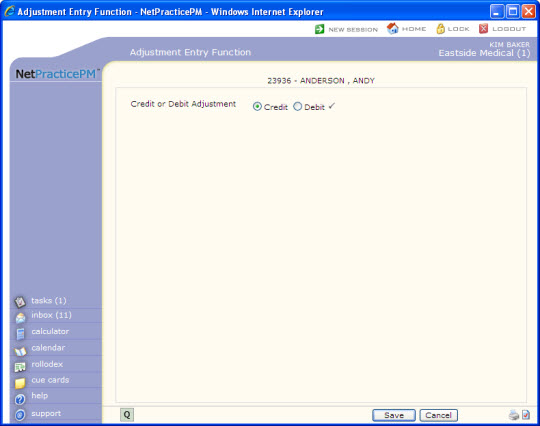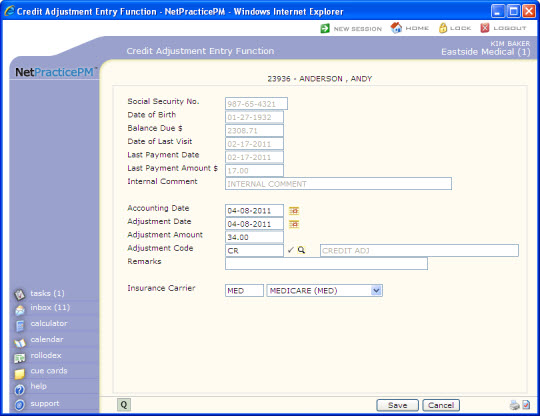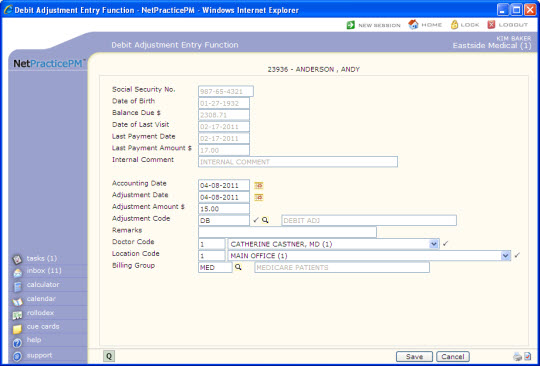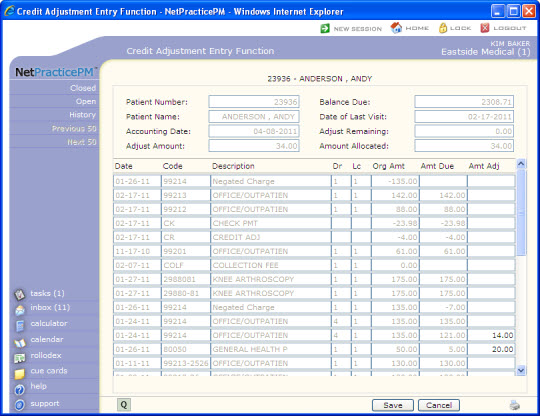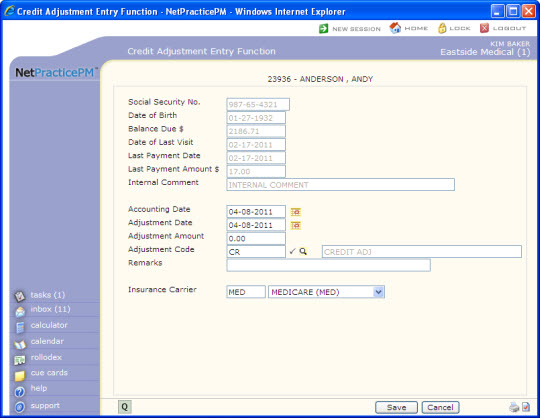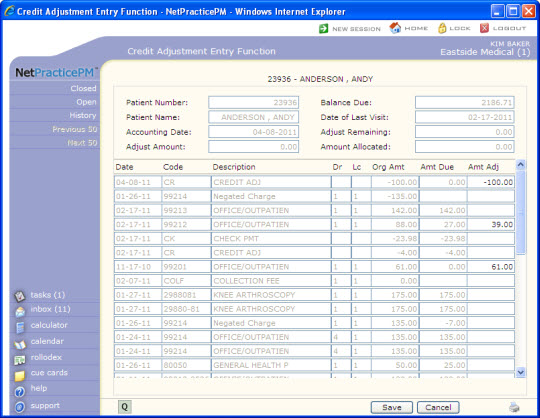| Prompt |
Response |
Req |
Len |
| Social Security No. |
This field is informational only and reflects the patient's social security number. |
|
11 |
| Date of Birth |
This field is informational only and reflects the patient's date of birth. |
|
10 |
| Balance Due $ |
This field is informational only and reflects the account balance. |
|
10 |
| Date of Last Visit |
This field is informational only and reflects the date of the last posted procedure. |
|
10 |
| Last Payment Date |
This field is informational only and reflects the date of the last posted payment. |
|
10 |
| Last Payment Amount $ |
This field is informational only and reflects the amount of the last posted payment. |
|
10 |
| Internal Comment |
This field is informational only and reflects any internal comment stored on the patient's account. |
|
45 |
| Accounting Date |
Type the accounting date you want or click the calendar icon to select a date. |
|
10 |
| Adjustment Date |
Type the adjustment date you want or click the calendar icon to select a date. |
|
10 |
| Adjustment Amount |
Type the adjustment amount or type an 'A' to post an accumulative adjustment. |
|
10 |
| Adjustment Code |
Type the adjustment code you want or click the magnifying glass to search the table. |
 |
10 |
| Remarks |
Type any remarks you want. |
|
40 |
| Insurance Carrier |
Type the insurance carrier code you want or select from the Insurance Carrier list. |
|
5 |
| Prompt |
Response |
Req |
Len |
| Social Security No. |
This field is informational only and reflects the patient's social security number. |
|
11 |
| Date of Birth |
This field is informational only and reflects the patient's date of birth. |
|
10 |
| Balance Due $ |
This field is informational only and reflects the account balance. |
|
10 |
| Date of Last Visit |
This field is informational only and reflects the date of the last posted procedure. |
|
10 |
| Last Payment Date |
This field is informational only and reflects the date of the last posted payment. |
|
10 |
| Last Payment Amount $ |
This field is informational only and reflects the amount of the last posted payment. |
|
10 |
| Internal Comment |
This field is informational only and reflects any internal comment stored on the patient's account. |
|
45 |
| Accounting Date |
Type the accounting date you want or click the calendar icon to select a date. |
|
10 |
| Adjustment Date |
Type the adjustment date you want or click the calendar icon to select a date. |
|
10 |
| Adjustment Amount $ |
Type the adjustment amount. |
|
10 |
| Adjustment Code |
Type the adjustment code you want or click the magnifying glass to search the table. |
 |
10 |
| Remarks |
Type any remarks you want. |
|
40 |
| Doctor Code |
Type the doctor code you want or select from the Doctor Code list. |
 |
3 |
| Location Code |
Type the location code you want or select from the Location Code list. |
 |
3 |
| Billing Group |
Type the billing group code you want or click the magnifying glass to search the table. |
|
5 |

